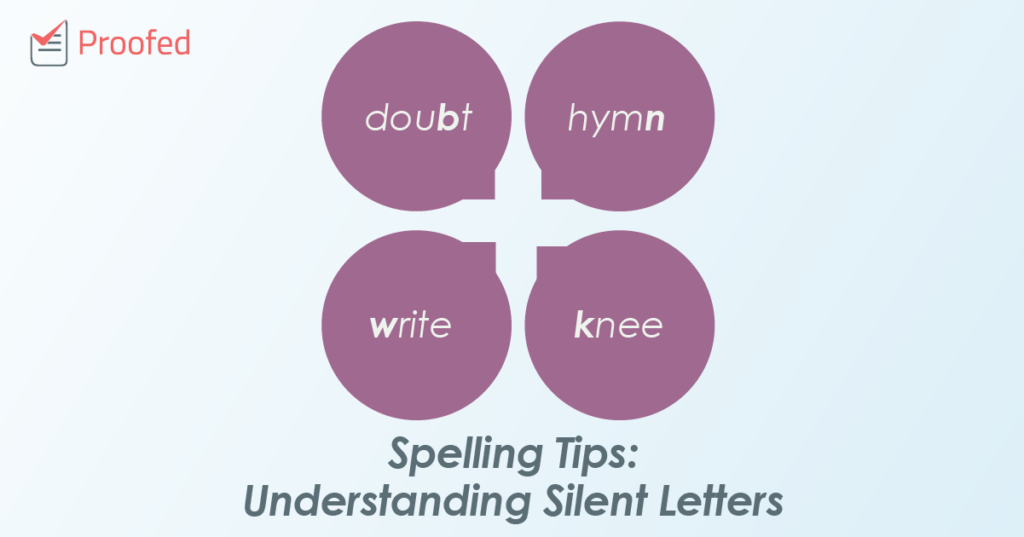Silent letters make spelling a real challenge. And this makes it vital to understand what silent letters are and what to look for in your writing in order to avoid spelling mistakes.
What Are Silent Letters?
Silent letters are just what they sound like: letters or letter combinations that are part of how a word is spelled, but which aren’t pronounced when a word is spoken. Take the word “gnome,” for example. The “g” at the start of this word is silent, so it’s pronounced as if it were spelled “nome” instead. We see the same in words like “gnaw” and “sign.”
Usually, this happens because the pronunciation of a word has changed over time, while its spelling has remained the same. Sometimes this difference helps us distinguish between two words that sound the same (e.g., “night” and “knight,” where the “k” is silent). In other cases, it is just habit.
There are no strict rules in English about when a letter is silent. You can, however, learn some common silent letter combinations and words so that you know what to look for.
Common Combinations
Some of the most common silent letter combinations include:
Find this useful?
Subscribe to our newsletter and get writing tips from our editors straight to your inbox.
- B after M or before T (e.g., doubt or crumb)
- C after S in some words (e.g., scissors or ascent)
- G before N (e.g., gnat or foreign)
- K before N (e.g., knee or knowledge)
- N after M (e.g., hymn or column)
- P before S, T, or N (e.g., psychic, receipt, or pneumonia)
- T before S in the middle of a word (e.g., castle or listen)
- W before R or sometimes after S (e.g., write or sword)
Keep in mind that these letter combinations aren’t always silent. This is particularly true when the two letters are part of different syllables, such as in the word “magnet.”
There are also cases that don’t follow any obvious pattern. For example, while the “c” after the “s” is silent in a word like “muscle,” it is pronounced in words like “score” and “disc.” This makes silent letters tricky to master, but practicing difficult words will definitely help!
Summary: Understanding Silent Letters
Silent letters are a common part of English. But how can you avoid silent letter errors in your writing?
- Look out for common silent letter combinations, such as “g” before “n,” “k” before “n,”and “w” before “r.”
- Learn common homophones with silent letters, such as “night” and “knight.”
- Use a spellchecker and get your work proofread to catch mistakes.
If you practice tricky terms, you should master silent letters in no time.
